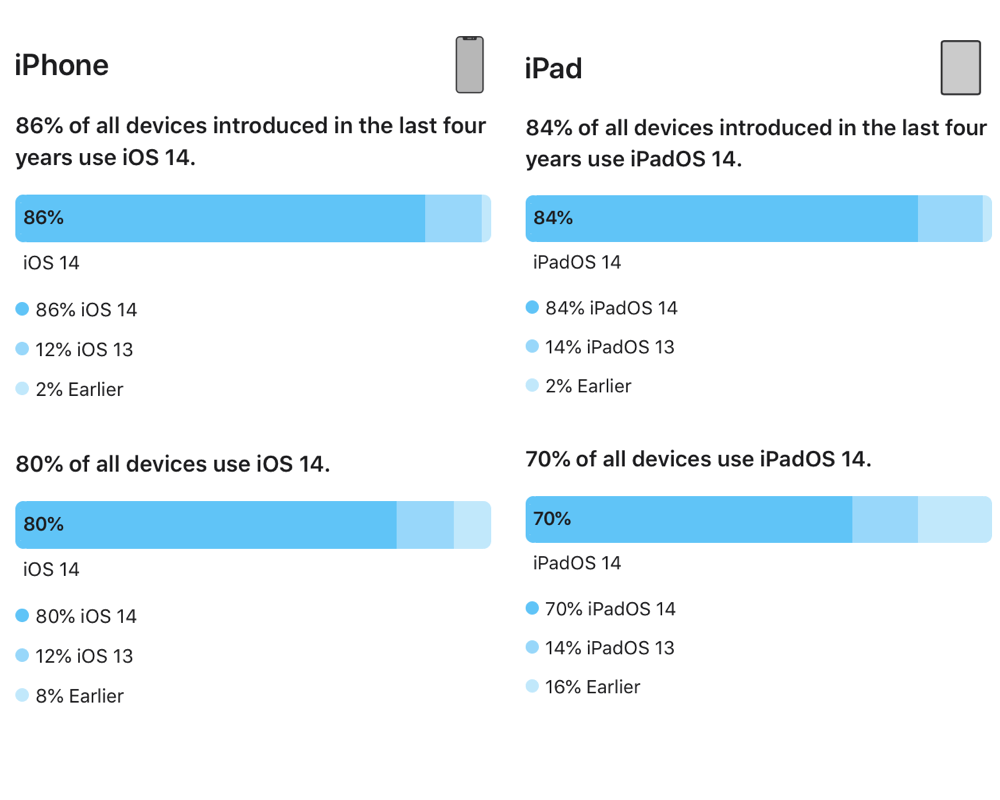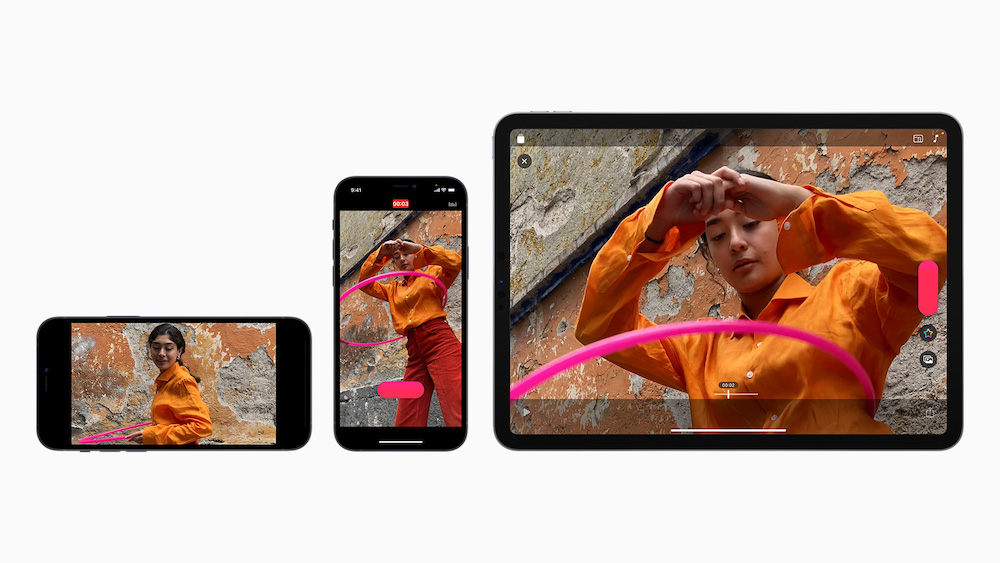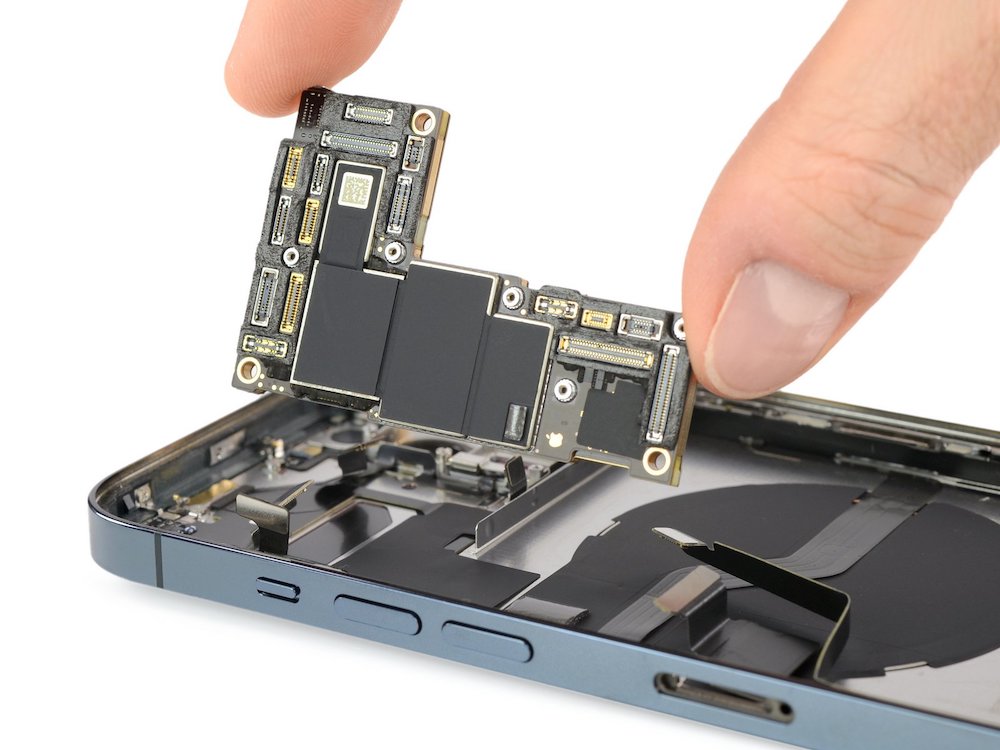Eight out of ten iPhones and iPads run iOS 14, says Apple

Apple supplied data
Apple has published the latest regular(ish) update into iOS and iPadOS usage across its actively used devices, confirming that the vast majority of us are now using iOS 14.
What the data says
Apple publishes these updates regularly and they usually consistently show that its customers rush to upgrade their devices when new operating system versions ship. That’s kind of unique in that other operating system vendors don’t seem to have figured out how to effectively distribute software updates, nor to motivate customers to upgrade once they do.
The inevitable result of which is that millions of devices running other operating systems end up in landfill quickly, even as comparable Apple devices remain in use running the latest OS. In my opinion, Apple’s devices are possibly the most environmentally friendly mobile devices you can get, in part because you can use them for years.
So, to the data.
iPhones
Here is what Apple told us about iPhone usage as measured by the App Store on Feb. 24:
- 86% of all devices introduced in the last four years use iOS 14
- 12% of all devices introduced in the last four years use iOS 13
- 2% of all devices introduced in the last four years use an earlier OS.
When it comes to all devices, including those over four years old, the breakdown looks like this:
- 80% of all devices use iOS 14.
- 12% of all devices use iOS 13.
- 8% of all devices use an earlier iOS.

iPads
Here is what Apple told us about iPhone usage as measured by the App Store on Feb. 24:
- 84% of all devices introduced in the last four years use iOS 14
- 14% of all devices introduced in the last four years use iOS 13
- 2% of all devices introduced in the last four years use an earlier OS.
When it comes to all devices, including those over four years old, the breakdown looks like this:
- 70% of all devices use iPadOS 14.
- 14% of all devices use iPadOS 13.
- 16% of all devices use an earlier OS.
I can’t be certain, but the data suggests iPads remain actively used for slightly longer than iPhones, which itself suggests these devices frequently get passed along the family/friend line.
This also suggests that companies targeting certain categories of consumer may choose to maintain support for iPadOS versions prior to iOS 13, as some of those groups may remain active users, but on an earlier OS.

Do not treat your new iPhone like this, unless you can iFixIt
What this means
That’s iPads, but the truth of things seems to be that with well over a billion (c.1.3b) iPhones and iPads in active use, around a billion users are now on the latest versions of the operating system with most others using the most recent previous edition OS.
- That’s good news for developers who can (with the exception noted above) focus on the latest operating system versions in app development.
- This is also good news for consumers who can expect their apps to perform consistently across the devices, and remains a positive point for Apple, which gets to continue to explain how unfragmented its platform is in comparison to others.
It is interesting to compare the data to the last update Apple offered on share around December 15. At that time 81% of all iPhones introduced in the last four years used iOS 14 and 72% of all active iPhones and 75% of iPads used iOS 14. The iPhone upgrade cycle is also clear given that 17% of all iPhones introduced in the last four years used iOS 13, with 2% using an earlier OS. More here.
Please follow me on Twitter, or join me in the AppleHolic’s bar & grill group on MeWe.




